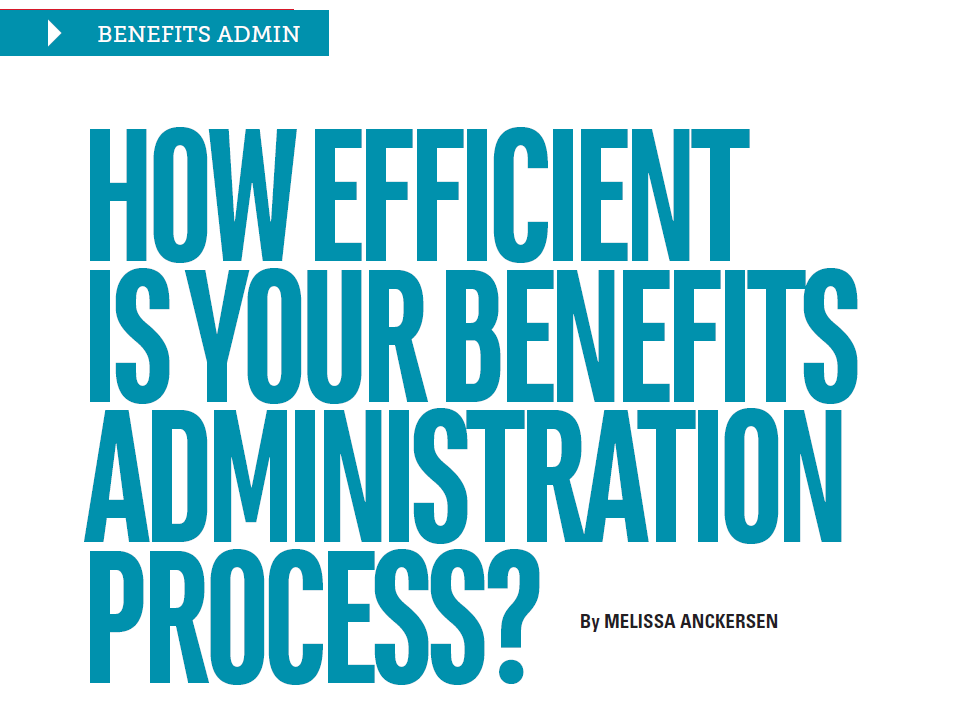For most HR departments and organizations, the path to a successful enrollment season seems like an uphill battle, no matter how much preparation goes into it. With open enrollment season here, HR teams have spent immeasurable time preparing their benefits administration strategy to handle the obstacles that so often derail a smooth enrollment period. But it’s not for nothing.
On average, employee benefits account for 31.7% of total compensation costs, and this places intense pressure on HR teams to determine the best approach to benefits administration. Preparing docs, confirming changes, making corrections—depending on your company’s size, even the more clerical tasks associated with benefits could take the whole year to prepare. So how do you know for sure that all this work ensures your administration process is future-proofed and ready?
The best way to answer this question is by holding a magnifying glass up to your administration processes and seeing where the roadblocks and inefficiencies exist. For instance, are you checking that your benefits administration strategy educates employees on all benefits questions, helps them elect smarter benefits, and keeps their benefits organized in one place?
To help you augment your benefits administration processes, we’ll discuss some of the most common inefficiencies that plague HR teams and the administration tools that can solve for them. By leveraging benefits administration tools and solutions (or outsourcing your benefits administration altogether–see www.hodgesmace.com/benefits-outsourcing/), you can update and even automate steps in your existing administration, which can alleviate HR stress so your team can stay focused on what’s important.
Common inefficiencies
When HR departments seek to improve their benefits administration strategy, outside factors such as rising healthcare costs and trends in employee benefits can end up clouding the clear, actionable steps that need to be taken. But when you hone in on specific inefficiencies that lie within your own administration processes, it’s easier to find a way forward and improve your overall administration strategy.
Some of the most common inefficiencies that employers encounter can be broken up into two categories:
- Educating employees about benefits
Employee education is a salient issue that pervades the entire HR community. In fact, one recent study showed that four out of every five employees end up enrolling in the wrong health plan. (According to a research article by Eric Johnson et al: Can Consumers Make Affordable Care Affordable? The Value of Choice Architecture.)
Another study found that 41% of surveyed employees say the open enrollment process at their company is “extremely confusing.” ( www.shrm.org: Employees Dazed and Confused by Benefit Choices). This situation arises when employee questions are left unanswered, benefit comparison data is missing, or your benefits administration process is generally faulty. The bottom line is that benefits administration processes are often ripe with opportunities to increase employee education around benefits, enabling your staff to appreciate the value of benefits and ultimately make better benefits decisions.
What inefficiencies to solve for:
- Elevate employee education on different benefits plans
- Answer common employee benefits questions
- Provide plan comparison documents
- Keep benefits information in a centralized location
The other common benefits administration issue stems from a lack of centralization. Many problems are solved by having one place that’s easily accessible by employees and embodies a single, integrated system for HR departments. Employers can spend less HR resources administering benefits and ultimately help control costs by having a dedicated place to track benefit declines and elections, consolidate data into a single centralized system, and use electronic submissions to make their open enrollment choices. If your company suffers from a fragmented benefits system, it might be time to look for a more centralized benefits delivery platform.
What inefficiencies to solve for:
- Collecting census data from different systems
- Tracking declines and elections
- Confirming and processing plan changes
- Manually setting up benefit plans every year
Overcome benefit admin inefficiencies
If your benefits administration process is experiencing problems with any of the above inefficiencies, you’re not alone. Seek turn-key benefits administration solutions that simplify and automate the common inefficiencies encountered by HR teams every enrollment season. By tackling some of the most common employee education issues and automating administrative HR functions, you will streamline the entire enrollment process and better leverage your investment in employee benefits.
Melissa Anckersen joined Hodges-Mace as senior vice president of Technology Services in November 2014. Prior to Hodges-Mace, she served as the SVP of Technology Services at SmartBen, a cloud-based technology company in the benefit administration and exchange market. As senior leader managing all customer life cycle functions, Melissa was responsible for implementation of data services, service teams, account management and technology services.


